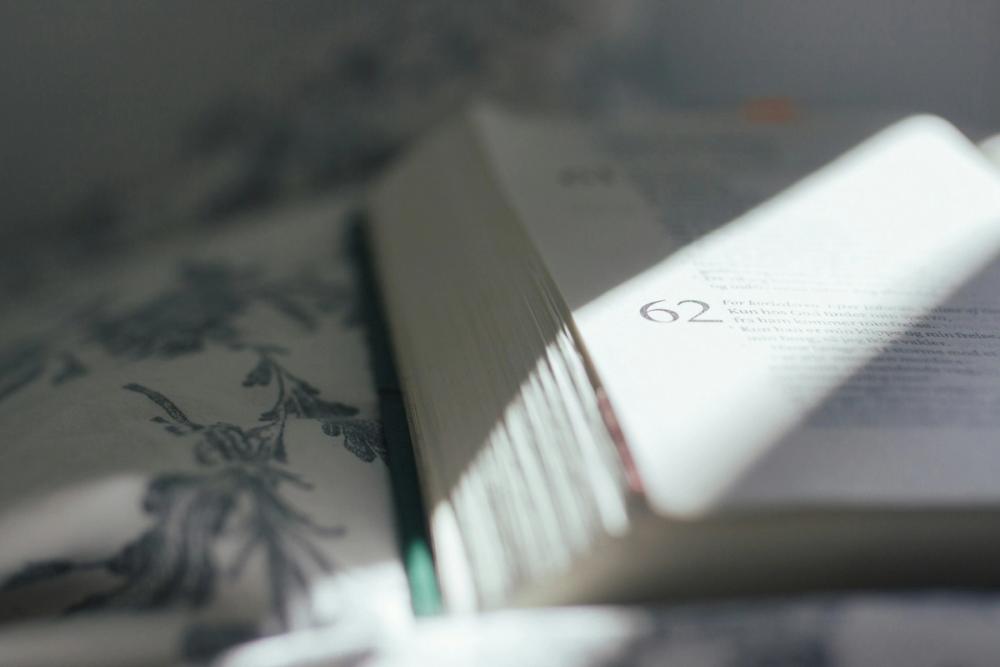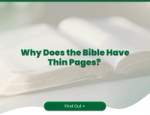Why Are Bibles So Expensive?
The Editor
Estimated Read Time: 5 Minutes

If you've shopped for a new Bible recently, you might have experienced a moment of "sticker shock." You see a simple paperback for under £20, but then you see a beautiful leather edition for £80, £120, or even £200. It's a valid question: if the words inside are the same, why are some Bibles so expensive?
It’s a common confusion. The truth is, when you buy a Bible, the price has very little to do with the priceless, life-changing text. The cost is for the physical craftsmanship of the book itself.
A Bible isn't just any book; it's a unique and complex item to produce. A high-quality Bible is a piece of expert craftsmanship, designed to be used daily and last for a lifetime. This guide will break down what you’re actually paying for.
Bibles can be expensive due to the high cost of their materials and craftsmanship; you're not paying for the words, but for a "legacy" item with features like sewn bindings (so it lays flat), premium "Bible paper" (to prevent bleed-through), and genuine leather covers.
1. The Paper: Thin, Strong, and Expensive
The first major cost is the paper. The Bible is a very long book—often over 1,500 pages. If it were printed on standard novel paper, it would be a massive, unusable multi-volume set.
To solve this, publishers use a specialist paper called "India paper" or "Bible paper." This paper is an engineering marvel:
- It's incredibly thin (measured in "gsm" or grams per square metre).
- It's highly opaque so that the text from the other side doesn't "ghost" or show through too much.
- It's strong and durable to withstand decades of page-turning.
This high-quality, specialist paper is significantly more expensive to produce than the paper used in a standard paperback.
2. The Binding: Glued vs. Sewn (This is the Big One)
The single biggest difference between a £15 Bible and a £70 Bible is the binding.
- Glued Binding (like a paperback): This is the standard for most books. The pages are cut and glued to the spine. It's cost-effective, but over time the glue will dry, and pages will become brittle and fall out. It also doesn't lay flat when open.
- Sewn Binding (or "Smyth-sewn"): This is the hallmark of a high-quality, long-lasting book. The pages are folded into small sets (called "signatures") and then stitched together with thread. These stitched sections are then bound to the cover. A sewn binding is far more durable, flexible, and allows the Bible to lay flat on a table when open—a feature essential for study. This process is much more complex and expensive.
3. The Cover: From Paperback to Genuine Leather
The cover material is the most obvious price factor. You are paying for the quality and longevity of the material.
- Paperback/Hardback: The most affordable, perfect for outreach, travel, or a first Bible.
- Imitation Leather (Leathersoft/TruTone): The popular "sweet spot." These man-made materials offer a soft, tactile feel, great durability, and beautiful designs for a reasonable price.
- Genuine Leather: This is the top tier. Materials like calfskin or goatskin are incredibly soft, supple, and will last for generations. The process of tanning and binding with these premium materials is a specialised craft, which is reflected in the price.
4. The "Extras": Study Notes & Royalties
Finally, you're paying for the "intellectual property" inside the book, beyond the biblical text itself.
- Translation Royalties: Publishers pay a fee to the translation committees (like for the NIV, NLT, or ESV) for every copy they print.
- Study Bible Content: When you buy a Study Bible, you're not just buying the Bible. You are also buying a 1,000-page commentary book, written by dozens of scholars, that is integrated into the text. The cost reflects the immense scholarly work required to create these thousands of notes, maps, and articles.
Conclusion: Cost vs. Value
So, why are some Bibles so expensive? Because you are choosing between a disposable item and a permanent one.
A £15 paperback is a miracle of modern publishing, giving everyone access to God's Word. It's designed to be used, marked up, and even given away.
A £100+ premium leather Bible is a different product entirely. It's a "legacy" item, a piece of fine craftsmanship designed to be your companion for a lifetime of study and passed down to the next generation. The words inside are the same, but the vessel is built to last.
Need help finding the right Bible for your budget? Check out our guide: How Much Should I Spend on a Bible?
Latest Blogs

Bibles
Why Are Bibles So Expensive?
Ever seen a Bible for £100 and wondered why? We explain what you're really paying for, from "sewn bindings" and "Bible paper" to premium leather and study notes.

Bibles
How Much Should I Spend on a Bible?
How much does a good Bible cost? Our 2025 guide explains what you get for your money, from Bibles under £20 to premium leather editions. Find the best value.

Bibles
The 5 Best Study Bibles to Give This Christmas
Looking for the perfect Study Bible to give as a gift? Our 2025 guide reviews the 5 best study Bibles for deep, meaningful study this Christmas.

Bibles
Why Does the Bible Have Thin Pages?
Ever wondered why Bible paper is so thin? We explain the reason (size!) and show you which Bibles, like Journaling Bibles, use thicker paper for notes.

Bible
Why is the Bible Called The Bible? (A Simple Explanation)
Ever wondered where the name "Bible" comes from? Discover the simple meaning behind the word and why it's called 'the books'.

Bibles
The ERV (Easy-to-Read Version): Your Questions Answered
What is the ERV Bible? Is it accurate? Our simple guide answers the top questions about the Easy-to-Read Version and compares it to the NIV and NLT.
